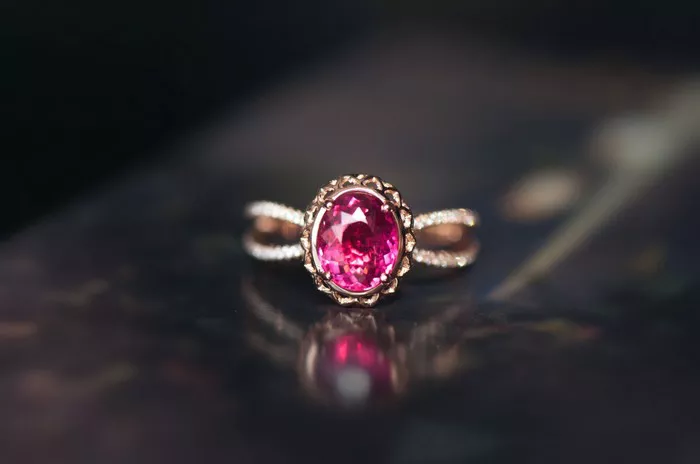Tourmaline is a fascinating mineral that has long intrigued both the jewelry industry and gem enthusiasts. To simply define whether it is a gem or a stone requires a comprehensive understanding of the concepts of gems and stones in the first place. In the world of minerals, the terms “gem” and “stone” are often used, but they have different connotations. A stone is a general term for a solid, non – metallic mineral matter. However, a gem is a more refined and highly valued subset of stones. It is a mineral or rock that, when cut and polished, is used in jewelry or other adornments due to its beauty, rarity, and durability.
The Nature of Tourmaline
Chemical Composition Tourmaline is a complex borosilicate mineral with a wide range of chemical compositions. Its general formula can be represented as XY3Z6(BO3)3Si6O18(OH)4, where X can be sodium, calcium, potassium, or vacancy; Y is mainly aluminum, iron, magnesium, or lithium; and Z is usually aluminum or iron. This complex chemical composition gives tourmaline a diverse range of colors and physical properties. For example, different combinations of elements can result in tourmaline being pink (due to the presence of manganese), green (from iron or chromium), blue (occasionally from iron), and black (when rich in iron).
Crystal Structure Tourmaline has a trigonal crystal system. Its crystals are often elongated and can be prismatic. The crystal structure is an important factor in determining the physical properties of tourmaline. For instance, the elongated crystal shape affects how it is cut and faceted in jewelry making. The crystal structure also influences its hardness, which is an important factor in considering its durability as a potential gemstone. Tourmaline has a Mohs hardness of about 7 – 7.5, which means it is relatively hard and can withstand some wear and tear.
Physical Properties In addition to hardness, tourmaline has other physical properties that are relevant to its classification. It has a vitreous to resinous luster, which gives it a certain shine when polished. Its transparency can vary from transparent to translucent, depending on the quality of the specimen. Tourmaline also has a relatively high refractive index, which affects how light passes through the stone and contributes to its sparkle and brilliance when cut as a gem.
Tourmaline as a Gem
Beauty One of the main reasons tourmaline is considered a gem is its beauty. With its wide range of colors, it can be used to create stunning and unique jewelry pieces. For example, the pink tourmaline is highly prized for its delicate and feminine color, often used in rings and pendants. The green tourmaline, especially the vivid and saturated shades, can rival emeralds in appearance and is used in high – end jewelry designs. The multicolored tourmaline, known as “watermelon tourmaline” with its pink and green combination, is also extremely popular for its novelty and aesthetic appeal.
Rarity While tourmaline is not as rare as some of the most precious gemstones like diamonds or rubies, certain varieties of tourmaline are quite scarce. For example, the Paraiba tourmaline, which was first discovered in Paraiba, Brazil, is known for its intense neon – blue and green colors. This type of tourmaline is extremely rare and highly sought – after in the gem market, fetching very high prices per carat. The rarity of certain tourmaline varieties adds to their value as gems.
Durability As mentioned before, tourmaline has a Mohs hardness of 7 – 7.5, which makes it durable enough for use in jewelry. It can be cut, polished, and set into various types of jewelry settings without easily getting scratched or damaged. However, it should be noted that like all gemstones, it still requires proper care to maintain its beauty over time. For example, it should be protected from hard blows and chemical exposure.
Tourmaline as a Stone
Industrial Uses Although tourmaline is well – known in the jewelry industry as a gem, it also has some industrial uses as a stone. Due to its piezoelectric properties (the ability to generate an electric charge when subjected to mechanical stress), tourmaline has been used in some electrical and electronic applications. For example, in the past, it was used in pressure gauges and some types of sensors. However, with the development of modern materials, its use in these areas has become less common.
Geological Significance In geology, tourmaline is an important indicator mineral. Its presence in rocks can provide valuable information about the geological processes that occurred during the formation of those rocks. For example, the distribution and composition of tourmaline in metamorphic rocks can help geologists understand the temperature, pressure, and chemical conditions during metamorphism.
Conclusion
In conclusion, tourmaline can be considered both a gem and a stone. In the context of the jewelry industry and adornment, it is without a doubt a gem due to its beauty, rarity, and durability. It has been used in jewelry for centuries and continues to be a popular choice among jewelers and consumers alike. However, from a broader geological and industrial perspective, it is also a stone with certain properties that are useful in other fields. Whether we view tourmaline as a gem or a stone depends on the context in which we are considering it, but its unique properties and allure make it a remarkable mineral in any case.
Related topic:
- Who Can Wear Green Tourmaline
- Which Finger to Wear Green Tourmaline?
- What is Black Tourmaline in Feng Shui?


